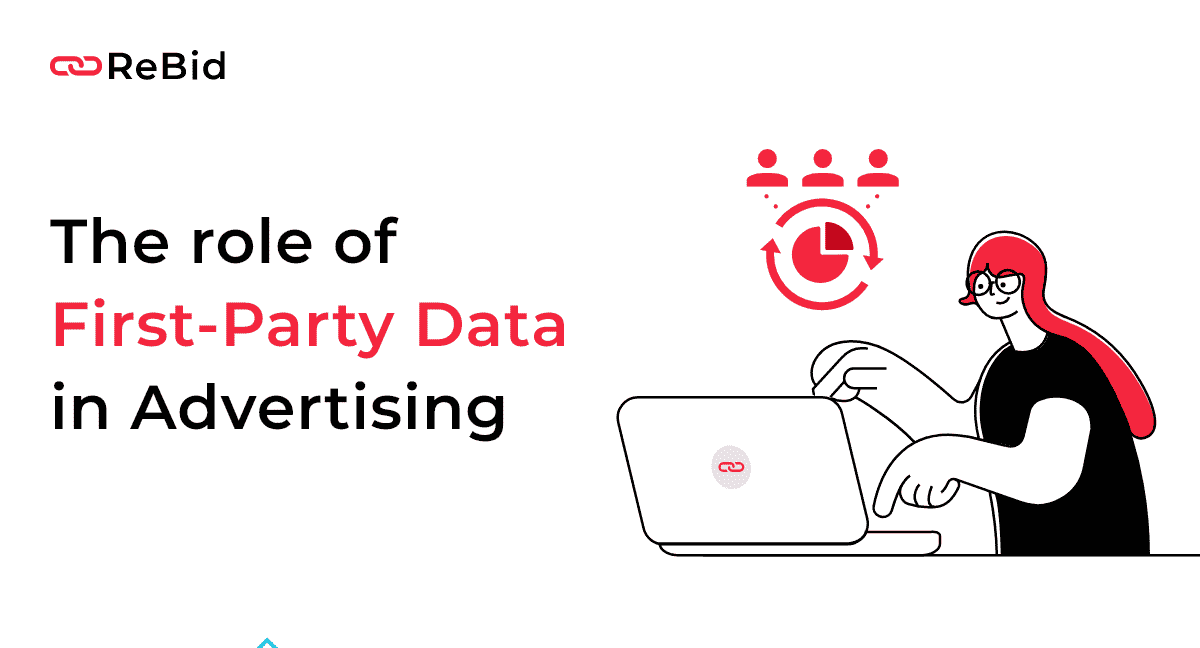First-party data has become the new oil for today’s modern data-driven advertisers. Having accessibility to the correct data just at an appropriate time is critical, but getting excessive data may be nearly as awful as incomplete data. Furthermore, when presented with all the other data points accessible, in data-driven analytics platforms, it is overwhelming: social networking sites like actions and shares, website visitors and comprehensive stats from Google Analytics, engagement on separate emails, etc.
When creating a marketing data situational analysis, most advertisers like to concentrate on a few indicators and how such metrics relate to company goals like profitability or audience expansion. However, collecting, analyzing, and evaluating this data typically necessitates a wide range of tools that are primarily sophisticated and require significant time for training to guarantee that you will be getting the most out of the data provided.
First, Second, and Third-Party Data
- First-Party Data– Data acquired and controlled by a firm about its consumers is first-party data. The company’s own software and processes assemble data about its clients. This information (digital engagements, past purchases, behavior, preferences, and so on) may be used by the corporation to tailor adverts, content, and encounters to a person’s preferences.
- Second Party Data– First-party data from a reliable source is called second-party data. Such data may help a firm attain a more significant level than depending just on its research. Since it is not offered publicly, it could be more valuable than third-party data, which is often accessible to anybody who wishes to purchase it.
- Third-Party Data– Third-party data, as opposed to first-party data, typically originates from an external source rather than a direct interaction between a client and a corporation. Third-party data is frequently derived from several websites, and this information is then gathered, categorized, and marketed to firms for their advertising usage.
Benefits of first-party data in advertising
First-party data is secure, lawful, and reliable. It enables you to provide personalized content, respond to constantly changing client information, and direct users to upper layers or tiers of any paid programs or loyalty rewards clubs. The following are the primary benefits of using first-party data:
- Compliant customer information– First party data can never Be OUT OF STOCK. This treasure is safe since you know and can show how the data was taken, compiled, and maintained. There is no deceit or fraud.
- Using information compatible with all browsers– All systems, browsers, and orientations will continue to pose risks to the computerized market and retail business. On the other hand, First-party data is like a gift that is and will be accepted as “appropriate” across the internet. This is the next step in the growth of internet marketing.
- Creating individual portions– You may develop specialized audiences for personalized marketing using both owned and openly available consumer information. You may reach out to particular groups of consumers who browse certain things, buy them regularly, or spend on only the “top-rated” items. First-party data is critical for expanding your business by analyzing and engaging these tiny groups more precisely.
Lead Generation Ads
Lead generation advertising enables you to identify people who could be intrigued by your goods or services & gather information from them. You may collect personal contact details, email addresses, mobile numbers, and more utilizing an Instant Application. These forms also allow you to incorporate unique inquiries to help you comprehend your potential consumers and achieve your company objectives.
Lead generation advertising can be used to:
- Determine possible clients for your company.
- Gather subscriber data for your business newsletter.
- Encourage people to download brochures or white papers.
- Recognize potential clients’ preferences and behaviors.
- Encourage individuals to register for your activities.
Survey Ads
The age of big data has arrived. We ought to employ additional survey techniques to gather information and then use statistics to assist us in doing jobs more efficiently. Developing surveys is appropriate for both businesses and people. This is a simple method for obtaining popular concepts. Companies may utilize surveys to gather data and precise information, bring products directly to the audience, and respond to customer feedback to optimize goods better.
The survey is an efficient method of gathering information. There are several avenues for investigation. How can you design a successful survey and collect more accurate data via promotion? And having 1.5 billion members, Facebook is a worldwide social network with a substantial number of viewers, and Facebook enables many types of survey marketing. You may collect high-quality survey data on Facebook in a short period if you employ Facebook advertisements.
How to run first-party data?
By utilizing first-party data, one can provide the present visitors with a tailored experience and give them communications that they expect. Furthermore, you obtain high-quality data while adhering to privacy regulations. You may get all permits, for example, via your website or app.
Let’s focus on three advantages of employing first-party data in the workplace.
- Create a personalized experience– Acquiring first-party information makes it simple to understand your consumers and categorize them. You may use online traffic analytics to develop audiences seeking specific items or are interested in a particular topic, such as sports or automobiles. It allows you to produce highly tailored communications while increasing the efficacy of your advertising strategies.
- Comply with GDPR– First-party data might be the most accessible because you hold it and are accountable for providing all necessary consent. Your legal department can give you the best advice on what information you should provide your users to process their data following privacy requirements. Essentially, consumers agree to your organization processing their data because it is typically required for completing a transaction. In the era of GDPR, it is critical to gather data lawfully, and first-party data is among the most reliable and significant users’ data.
- Get insights about your audience- Gathering first-party data allows you to retain details and delve deeper into the backgrounds of your consumers. You may develop a complete image of your clients by integrating data about them from numerous sources (website, surveys, applications, games) utilizing technological solutions such as DMP.
ReBid buy is connected to Liveramp.
Liveramp is a data enablement platform built on identity, based on privacy, and accessible anywhere, and ReBid is connected to it. It assists our clients in solving challenging consumer challenges by providing data that can do more.
The platform gives the contemporary company complete control over how information is accessed and utilized with industry-leading technology solutions for identification, activation, and information collaboration.
- Create your database.
- Turn on your data.
- More precise measurement.
- Increase consumer privacy.
Conclusion
There’s no denying that high-quality information is critical to your company’s success. However, as data rules and customer behavior evolve, the validity and dependability of your brand’s first-party data are more critical than ever. Advertisers who do not maximize the value of their first-party data are falling out on the tremendous potential to provide outstanding customer service. Because satisfied customers are a must – and besides, it costs six times more now to acquire new customers – advertisers must do precisely that. 1st-party data should be seen as the primary fuel for client retention that generates relationships and revenue for today’s modern marketer.





